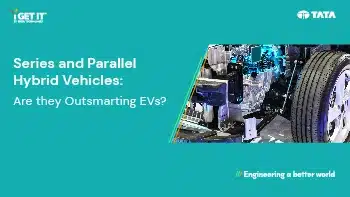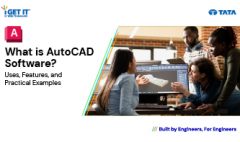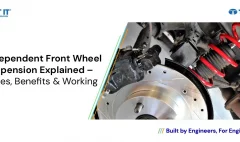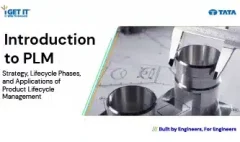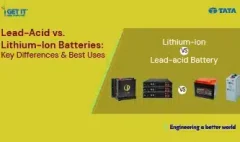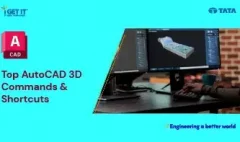Series & Parallel Hybrid Vehicles: Are they Outsmarting EVs?
July 5, 2024 2024-11-11 13:29Series & Parallel Hybrid Vehicles: Are they Outsmarting EVs?
Series & Parallel Hybrid Vehicles: Are they Outsmarting EVs?
With increased population of automobiles in emerging markets and growing challenges of environmental pollution control, the “over-matured” propulsion technologies around Internal Combustion Engines (ICE) have hit a technological saturation. This has mandated the policymakers and global automotive industry to switch to Battery Electric Vehicles (BEVs) propelled by e-motors, however they too are facing multiple challenges on faster adoption and effective Carbon emission reduction. Obviously, there is no “Perfect” solution on this planet, however Series and Parallel Hybrid Electric Vehicles (HEVs) have been enabling both the prime-movers viz. IC Engine and e-motor to work together and offer an optimized solution for propulsion.
HEVs propelled by “Hybrid Powertrains”, strike a reasonably good trade-off between CO2 + exhaust emissions & the last mile mobility needs, that too at a reasonable cost impact. The Government of India has introduced the FAME I & II schemes (Faster Adoption and Manufacturing of Hybrid & Electric Vehicles), over last decade to subsidize/incentivize and promote HEVs and BEVs in Indian market. HEVs have been quite popular in advanced markets over last two decades, however despite FAME scheme, they were unable to find their place in cost sensitive Indian market earlier.
Now with increased affordability and technology orientation of Indian car-buyers in recent years, multiple global OEMs have offered strong HEVs in Indian market. The other two popular types of hybrid vehicles viz. Plug-in Hybrid (PHEV) and Range Extender Electric Vehicle (REEV) are still lagging due to higher price tags. Now that, we have quite a few strong HEVs on Indian roads, it is pertinent to explore state-of-the-art hybrid powertrain technologies.
Requirements of a typical on-road vehicle and limitations of ICE & e-powertrains
Before deep diving in hybrids, let us briefly look at propulsion requirements of a typical on-road vehicle and limitations of ICE & e-powertrains.
Propulsion of a vehicle demands to overcome the initial resistance to vehicle motion which is coming from its inertia, road-tire friction, and positive road gradients when applicable. Further, as vehicle is to be accelerated, it needs additional effort to overcome aerodynamic drag which is fast increasing with speed.
The real challenge is the randomness of the vehicle speed due to traffic conditions &/or driver’s wish as well as the variation of load due to operating conditions, such as driving empty / laden, driving uphill/downhill, cruising or coasting, braking / accelerating and numerous permutations & combinations thereof. This implies, that the energy stored onboard either in the form of fuel in tank or electrical charge in High Voltage (HV) battery which is being consumed for vehicle propulsion, varies according to the driving needs and conditions. This energy utilization is not necessarily happening at best efficiency of its powertrain. For e.g., any IC Engine has a specific speed-load range of its best efficiency (sweet spot of engine). However, due to randomly changing drive conditions, it ends up consuming excessive fuel during idling, engine starting, vehicle take-off or maximum vehicle speeds.
The e-motor on other hand, can simply be switched off, thereby eliminating loss of energy during vehicle halts in traffic conditions or traffic signal. Further, E-motor can provide its peak torque right from start and help to achieve very good acceleration during take-off. Interestingly, the energy transfer during vehicle propulsion is of bi-directional &/ binary nature i.e., either engine/motor is driving the vehicle or vice versa. So, during the latter phase, the e-motor can help recuperate the kinetic energy of vehicle by acting as a generator during coast-down, downhill coasting and braking which otherwise could have been lost in friction. The idea here in hybrid vehicles is to employ both these powertrains and make them propel the vehicle together in an optimum manner and exploit opportunities of energy recuperation.
Difference between Series and Parallel Hybrid Electric Vehicles
While using more than one prime mover onboard (typically limited to two though!), one can arrange them, either in series or in parallel configuration. In Series Hybrid Vehicle, the IC Engine simply acts as an onboard generator to keep the HV battery charged, while the e-motor propels the vehicle all the time. In Parallel Hybrid Vehicle, the IC Engine as well as e-motor are connected to the driven wheels, while e-motor propels the vehicle on its own or in combination with IC engine. The limitation in parallel hybrid is that the IC Engine always stay connected to the driven wheels. Hence, the engine speed gets dictated by the vehicle speed which may not always fall around its sweet spot. To overcome this limitation, series-parallel hybrids are developed with a power split device that enables IC engine operation within narrow range of its best efficiency thereby significantly improving overall fuel economy. Two e-motors, which can also act as a generator, are used in this layout. The smaller one i.e., Motor-Gen 1 acts as a starter motor for engine, and once engine is started it acts as a generator charging the HV battery. The bigger one i.e., Motor-Gen 2 acts as main traction motor to drive the wheels and gets converted to generator during recuperation mode as mentioned earlier.
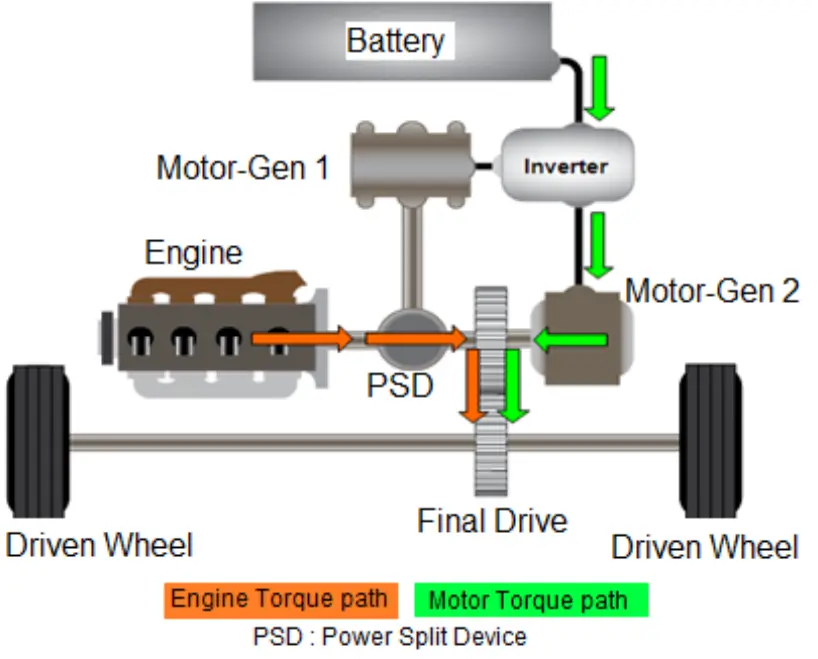
The power split device enables splitting as well as integration of power from two sources. Toyota has achieved this using planetary gear transmission which is electronically controlled to operate as an infinitely variable transmission and keep the engine running close to its sweet spot. Whereas Honda uses two clutches (Low and High) to engage & disengage the engine with final drive to the wheels at low and high-speed ranges. Other OEMs simply use conventional Automatic transmission or DCT (Dual Clutch Transmission) in conjunction with two motor generators.
All these approaches bring their own benefits along with limitations &/ challenges. The key advantage in planetary system is that, since both the prime movers (ICE & Motor-Gen 2) are in constant mesh with the “Countergear” driving the wheels through differential unit, it is quite responsive, and the speed of Motor-Gen 1 can be controlled to achieve infinitely variable transmission ratio (ranging from underdrive to overdrive). However, this also brings limitation on its generator mode since it must follow the random drive cycle that vehicle is undergoing, meaning it cannot charge the HV battery in isolation.
On the contrary, the other system allows engine and Motor-Gen 1 to charge the HV battery in isolation (in series hybrid mode) due to availability of clutch. The clutching and de-clutching however may cause a little delay (lag) in power delivery during shifting. Multiple variants of these Series-Parallel hybrid transmissions are used in cars and SUVs as per the size and performance needs.
Final Thoughts
Looking at global scenario of BEV penetration and its associated ongoing challenges, the opportunity for HEVs is evident especially in the emerging market and fast developing economy such as India.
The costs of BEVs are already brought down to their ICE equivalents in China, however, they are still 10% to 50% higher in Europe, US and are expected to reach the price parity by 2030.
The costs of BEVs are still higher compared to their ICE counterparts in India and are in fact competing with equivalent HEVs. The disparity in growth rates of affordability, charging infrastructure, green electricity generation and BEV sales numbers will be the key for growth of HEVs in India. Given that India is the fastest growing major economy, the global OEMs, those having well proven hybrid powertrain technologies have been pouring in their offerings in India. With HEVs offering best of both worlds (ICEV & BEV) at reasonable costs and comfort, It will be interesting to witness how BEVs and HEVs/PHEVs co-exist and compete in near future!
EV Certification Courses by Tata Technologies
Understanding the intricacies of both EV and Hybrid Vehicle systems is crucial for making informed decisions about the future of transportation. i GET IT by Tata Technologies, with its comprehensive library of EV courses, empowers you to delve into the world of electric and hybrid vehicles. These courses, designed by industry experts, provide in-depth knowledge of electric powertrains, battery technology, and the inner workings of both hybrid and electric vehicles. Equipping yourself with this knowledge can be a valuable asset, whether you’re a car enthusiast, a budding automotive professional, or simply someone looking to navigate the ever-changing landscape of sustainable transportation. Visit the i GET IT website today to explore our EV courses and unlock the secrets of the future of mobility.
Kedar Gokhale
Related Posts
What Is AutoCAD Software? Uses, Features & Practical Examples
Independent Front Wheel Suspension – Types, Benefits & Working
What is PLM? – Product Lifecycle Management [Detailed Guide]
Lead-Acid vs. Lithium-Ion Batteries: Key Differences & Best Uses
Top AutoCAD 3D Commands & Shortcuts with Examples
Find
Categories
Latest Posts
What Is AutoCAD Software? Uses, Features & Practical Examples
December 18, 2025Independent Front Wheel Suspension – Types, Benefits & Working
November 10, 2025What is PLM? – Product Lifecycle Management [Detailed Guide]
October 9, 2025Popular Tags




